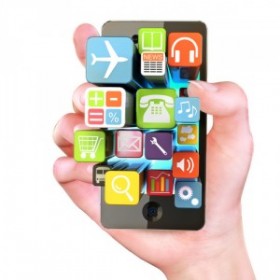The age of mobile access has arrived! We live a mobile way of life. This existence has been fueled by a near omnipresent penetration and by new messaging, usage and functional applications. You can’t run away from it. Mobile devices are no longer just smart phones; they are also your tablet, used to fire up your car’s electronics, wireless home entertainment and home appliances. How we consume media has primarily changed.
Texting is at its best at the moment. American Idol being the prime example of it. The winner of Season 6 received 74 million votes with 609 million votes cast over the course of the TV season for a variety of candidates. In the last U.S. election way less people voted compared to the statistics mentioned.
Radio listeners can identify songs via their smartphones and Blackberry’s – allowing users to download the song or ring tone. There are QR codes, online price comparison, location based services, social media, deep discount and tablets.
A company in the U.K. allows cell phone users to send a text message the word ‘toilet’, and a satellite helps them pin down the location of the nearest toilet available. The satellite picks up the phone signals and uses it to find the location of the nearest place.
Location-based services use social networking tools that allow users to broadcast their whereabouts and invite friends to join them.
- Get a response. Use SMS when you are looking for an immediate and high response rate. Response times to an SMS are also faster.
- Use an SMS shortcode. Including a short code in advertising campaigns has been shown to boost response rates. In some advertising campaigns the uplift is over 10%.
- Give an offer. Nearly all marketing gurus will tell you that an offer is vital. This is particularly so with SMS, as it is such an instant channel.
- Provide a simple call to action. Many people make the mistake of having a call to action that is too multifaceted. For instance ‘register on our website’ sent in an SMS is too much. Making it simple and easy: ‘call us now’ or ‘reply to this SMS’ is likely to have the best response.
- Target your audience. The mobile phone is a highly personal source of communication, so the better you target your clients the greater the results.
- Make it personal. Personalizing a campaign can bring great responses. For instance, instead of offering a general discount, give the mobile user a voucher that can be cashed in.
- Timing is everything. As SMS is so instant, the time of day is critical to the success of the campaign. Studies have shown that cell phones are used mainly between noon and 6pm. Even though it depends on the product, the best time to send a marketing campaign is late afternoon.
- Respond quickly. Respond promptly once they have opted in to a mobile campaign. An auto reply is necessary for a short code, and follow up messages should be within a few days.
- Gain the users trust. Make certain that you noticeably identify your company, and provide an opt-out route.
- Use a clear opt-in process. Whilst it is all right to send either service messages or marketing messages to customers for similar products, without their prior consent, this is not always the best practice.
